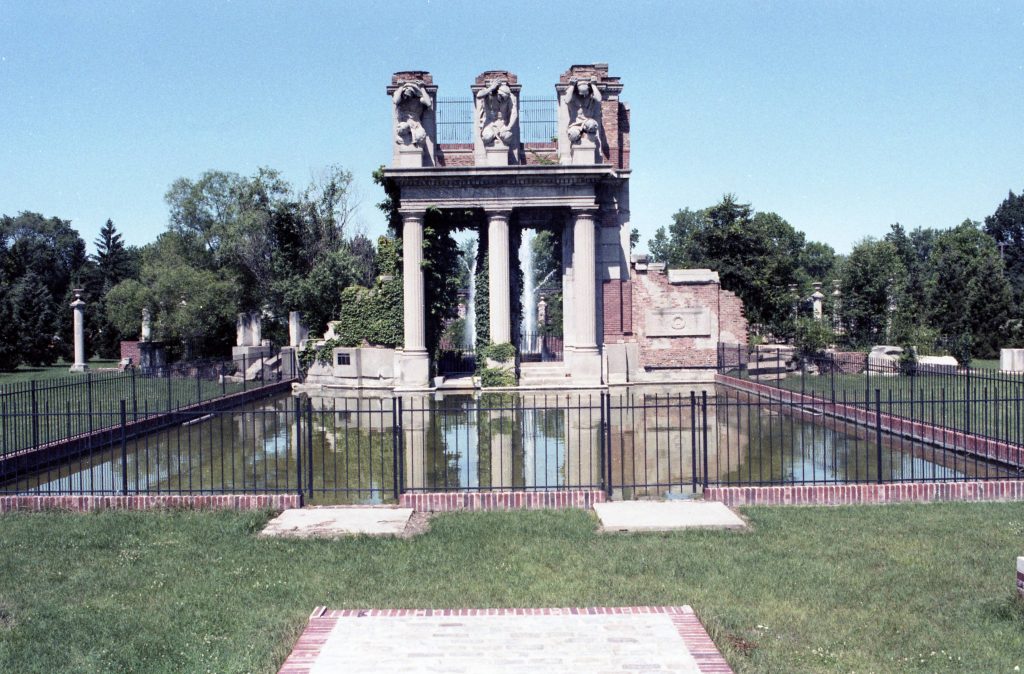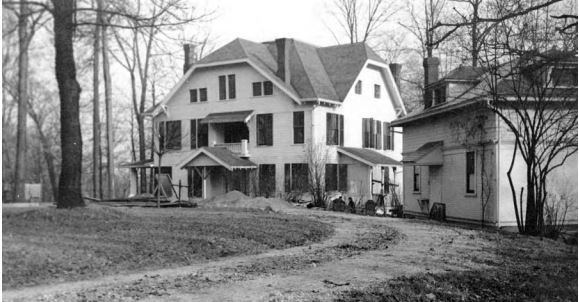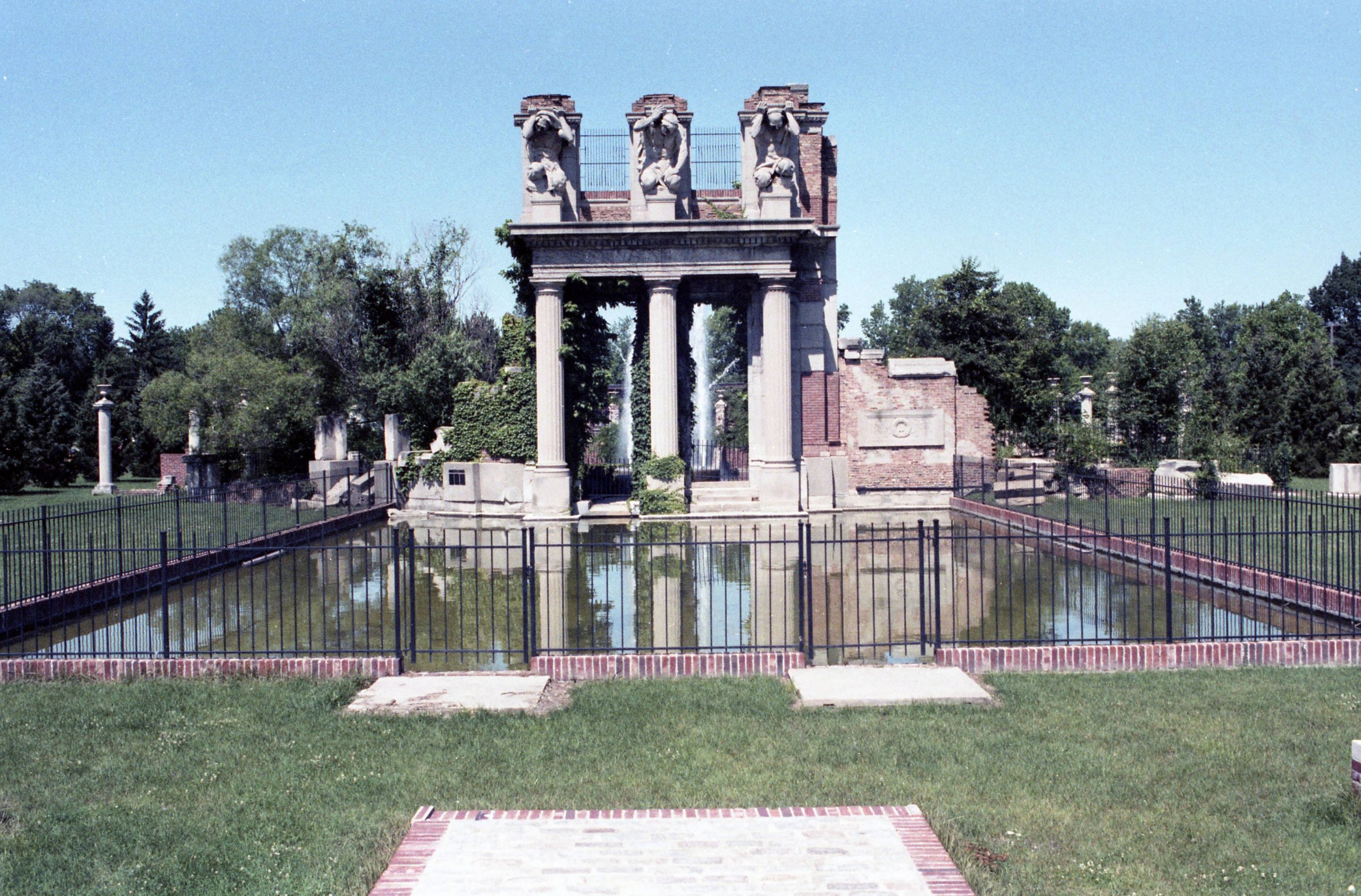(founder of the ) and his wife , both active philanthropists, deeded their 80-acre estate to the city in 1916 for use as a public park. The land became part of the city park system in early March 1932. Several years after the city took possession of the property, New Deal Works Progress Administration (WPA) employees began work to clear and rearrange the terrain, constructing paths and roads in the woodlands, creating small ponds stocked with trout and bluegill, building a picnic shelter, and creating what is now the rock garden.

An arboretum and botanical garden opened in early 1940 after several years of work by professor and botanist William Clute who focused on building up a collection of rare and exotic plants. In 1941, Scott McCoy, a botany teacher at , was hired to manage the park. He began a column in the “Happenings at Holliday Park” and also increased the number of native plant specimens in the park. After McCoy came a long list of managers, most staying only a few years.
Throughout the 1940s and into the 1950s, Holliday Park was maintained as a botanical garden and arboretum. The Holliday House had been converted into a botanic library and museum of natural history, which was used by school children, local garden clubs, and community organizations. The Indianapolis Art League () also used the space for classes, workshops and art lectures. The house was destroyed by fire in 1955, and a new Holliday House replaced it in 1960.
In 1958, Holliday Park became home to The Races of Mankind sculpted by Karl T. Bitter. Born in Vienna, Austria, in 1867, Bitter attended art school with , sculptor of the “War” and “Peace” groups at the foot of the .
Among his many important works completed at the turn of the twentieth century, Bitter designed the five-foot-tall statues of three kneeling men to adorn New York City’s St. Paul Building, which was constructed in 1896. His figures adorn the Memorial Fountain in . When Western Electric Company decided to raze the building in 1958 to make way for its new headquarters, the corporation arranged with the Committee to Preserve American Art to donate the sculptures. A national committee selected Indianapolis over bids by the United Nations, several universities, and the New York airport.

The city commissioned local artist to design a grotto for the statues, which later became known as “The Ruins.” Taflinger’s proposal persuaded Western Electric, which had a plant on Shadeland Avenue, to give the Bitter statues to Indianapolis.
The development of Taflinger’s plans was delayed until the 1970s. When finally dedicated in October 1973, “Constitution Mall,” as Taflinger called his design, included three limestone tablets representing the three races of mankind and the three branches of government, a reflecting pool with fountains, 25 Grecian columns from the former Sisters of the Good Shepherd Convent, and 4 allegorical female statues from the old Marion County Courthouse, all situated amidst a tree-filled landscape.
Holliday Park began the 1980s with upgrades including a freshly remodeled and landscaped Holliday House, labeled and replaced trees in the Arboretum, and construction of the Wedding Circle. By the late 1980s, however, the park was no longer being maintained and began to be plagued by vandalism and crime. Visits to the park declined, and schools stopped sending classes there for field trips.
The Friends of Holliday Park was officially organized in June 1990 to address safety concerns and maintain and preserve the park. One of their first projects was to secure funding for a playground to bring families back to the park. By 1992, a new playground, as well as sidewalks, landscaping, fences, and drinking fountains, were completed. A year later, the city invested in revitalizing the park’s trail system. The entrance was moved as well to align with 64th Street. Nature and environmental programs were increased through the 1990s, and educational resources were created for teachers, schoolchildren, scout troops, and other visitors.

In 1998, the Holliday House needed many repairs so plans were laid to build a new nature center. The groundbreaking ceremony for the Holliday Park Nature Center occurred in October, and its doors opened on April 15, 2000. The nature center included an innovative exhibit hall displaying the history of the park, art galleries, an auditorium and classrooms, indoor wildlife viewing spaces, and a research library next door.
Friends of Holliday Park, along with Indy Parks, replaced the playground equipment in 2006 and 2007. In 2012, the group began revitalizing and expanding the Ruins after raising over $3.2 million. The project, which also included the construction of a performance space, was completed in September 2016. The Holliday Park Foundation built and opened a seasonal ice skating rink in 2022.

Help improve this entry
Contribute information, offer corrections, suggest images.
You can also recommend new entries related to this topic.
